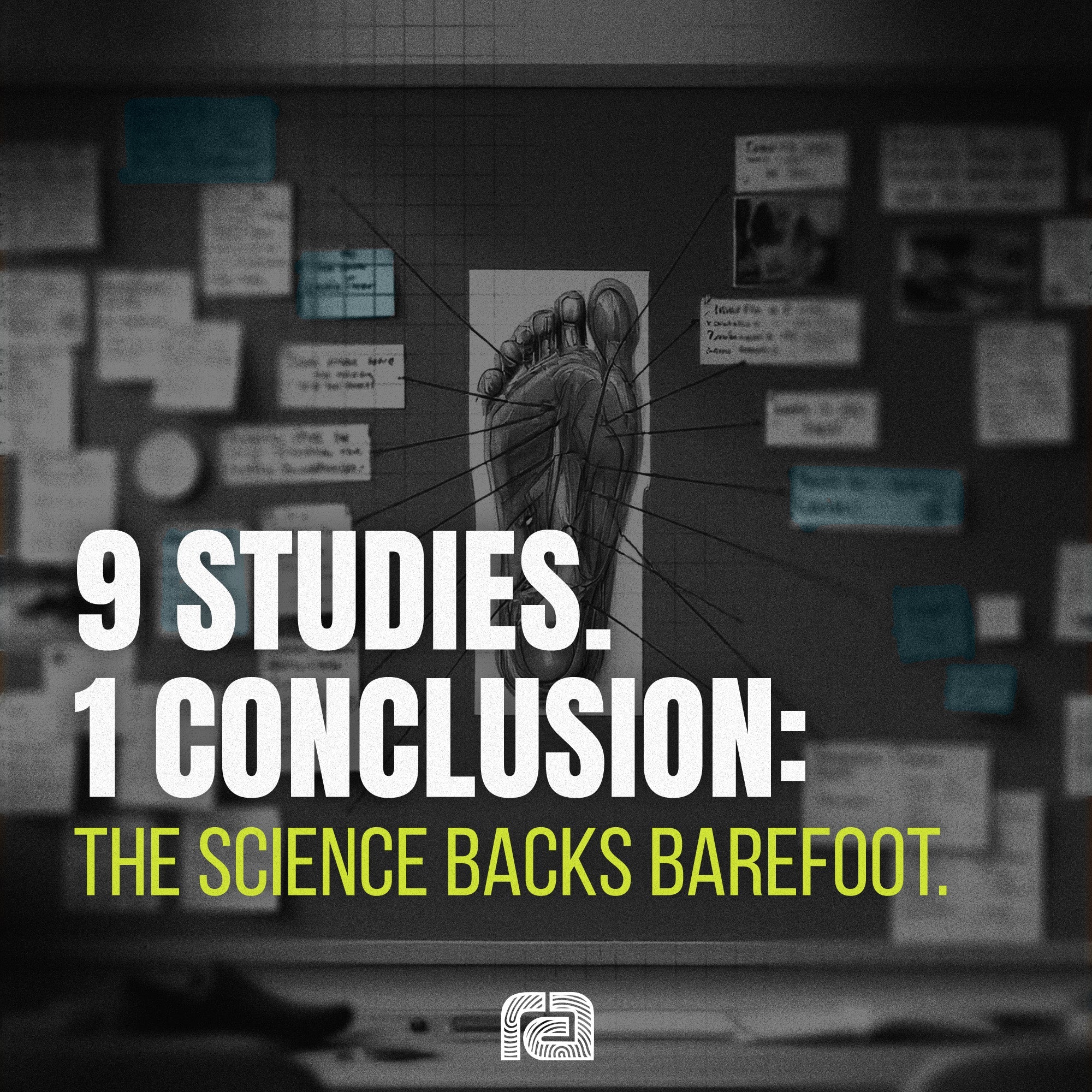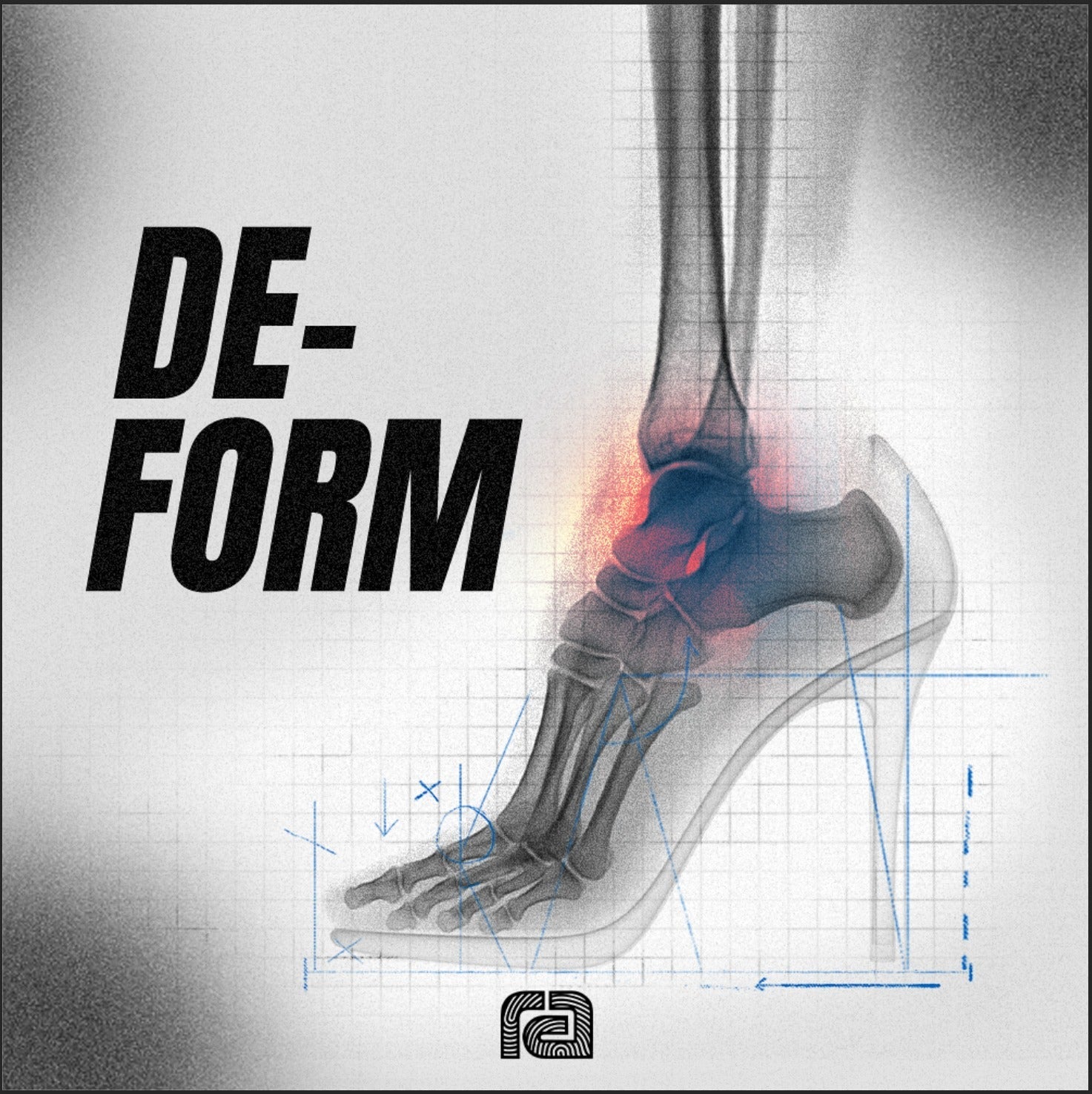Article: Barefoot Footwear: The Debate Is Over

Barefoot Footwear: The Debate Is Over
9 studies. 0 contradictions. Barefoot footwear reactivates what cushioned shoes suppressed.
The debate is settled—and evolution won.
For years, barefoot shoes were considered a niche trend. A comprehensive systematic review has now made the verdict impossible to ignore:
Barefoot footwear leads to measurable, consistent improvements in foot muscle size and strength.
The Evidence: A Systematic Review
In 2022, researchers Xu, Saliba, and Jaffri conducted a systematic review published in the International Journal of Sports Medicine. Their goal: to assess whether barefoot shoes affect the intrinsic foot muscles.
They reviewed 9 high-quality controlled studies from 2016 to 2021. Participants wore barefoot footwear during daily life, with no additional exercise protocols. Muscle strength and size were tracked using imaging tools and force testing.
“Minimal footwear use shows consistent improvements in intrinsic foot muscle size and strength.”
— Xu et al., 2022
Data Highlights
The systematic review examined nine independent studies comparing barefoot footwear to conventional shoes. Rather than isolate random examples, the review focused on replicable patterns of adaptation in foot strength and size.
Across the studies:
-
-
-
-
-
-
-
Participants who wore barefoot footwear consistently showed increases in intrinsic foot muscle thickness, cross-sectional area (CSA), and strength.
-
The most commonly affected muscles included the abductor hallucis and the flexor digitorum brevis.
-
Improvements were seen across a range of time frames—from as little as 2 weeks to 24 weeks.
-
The control groups, which wore conventional footwear, showed no meaningful changes.
-
-
-
-
-
-
Here are some specific examples from the review:
-
-
-
-
-
-
-
Hashimoto et al. (2020): After 8 weeks of barefoot shoe use, participants showed a 10.6% increase in abductor hallucis muscle thickness.
-
Chen et al. (2016): Found significant improvements in toe flexor strength over a 12-week period using barefoot shoes.
-
Ridge et al. (2019): Over 24 weeks, participants saw an average 17% increase in cross-sectional area of key foot muscles.
-
-
-
-
-
-
“Simply replacing daily-use shoes with minimalist footwear may lead to muscular adaptation, without any specific training intervention.”
— Xu et al., 2022
These findings were consistent despite variations in population demographics, measurement techniques, and study durations.
Independently, they’re strong. Together, they’re irrefutable.

Three Myths This Review Destroys
-
-
-
-
-
-
-
-
Myth 1: “Feet need support.”
-
-
-
-
-
-
-
For decades, the footwear industry has pushed the idea that arch support, cushioning, and stability features are essential for healthy feet. But what this review shows is that such features can actually interfere with normal muscle function. When the foot is overly supported, its intrinsic muscles are underused. Barefoot shoes, by contrast, allow these muscles to engage as intended—resulting in tangible strength gains.
-
-
-
-
-
-
-
-
Myth 2: “Barefoot shoes require special training.”
-
-
-
-
-
-
-
Skeptics often claim that adapting to barefoot-style footwear requires intense training or expert supervision. The review discredits that entirely. In all nine studies, participants were not asked to follow any specific exercise routines. They simply wore minimalist shoes during daily life—walking, standing, moving naturally. Yet the results were clear: foot muscles grew stronger, even without a structured plan.
-
-
-
-
-
-
-
-
Myth 3: “There isn't enough evidence.”
-
-
-
-
-
-
-
Early adopters of minimal footwear were often dismissed due to a supposed lack of clinical data. That’s no longer the case. This review compiled nine independent, controlled trials—different researchers, different populations, different durations. The outcome was remarkably consistent: minimalist footwear improves foot strength.
Conclusion
The strength benefits of barefoot footwear are no longer speculative. Multiple independent studies have arrived at the same outcome: barefoot shoes contribute to measurable improvements in foot muscle size and strength through everyday use.
The question is no longer "Do they work?"
It’s *"Why are we still wearing shoes that don’t?"
Reference
Xu, J., Saliba, S.A., & Jaffri, A.H. (2022).
The Effects of Minimalist Shoes on Plantar Intrinsic Foot Muscle Size and Strength: A Systematic Review.
International Journal of Sports Medicine. PMID: 35878616


